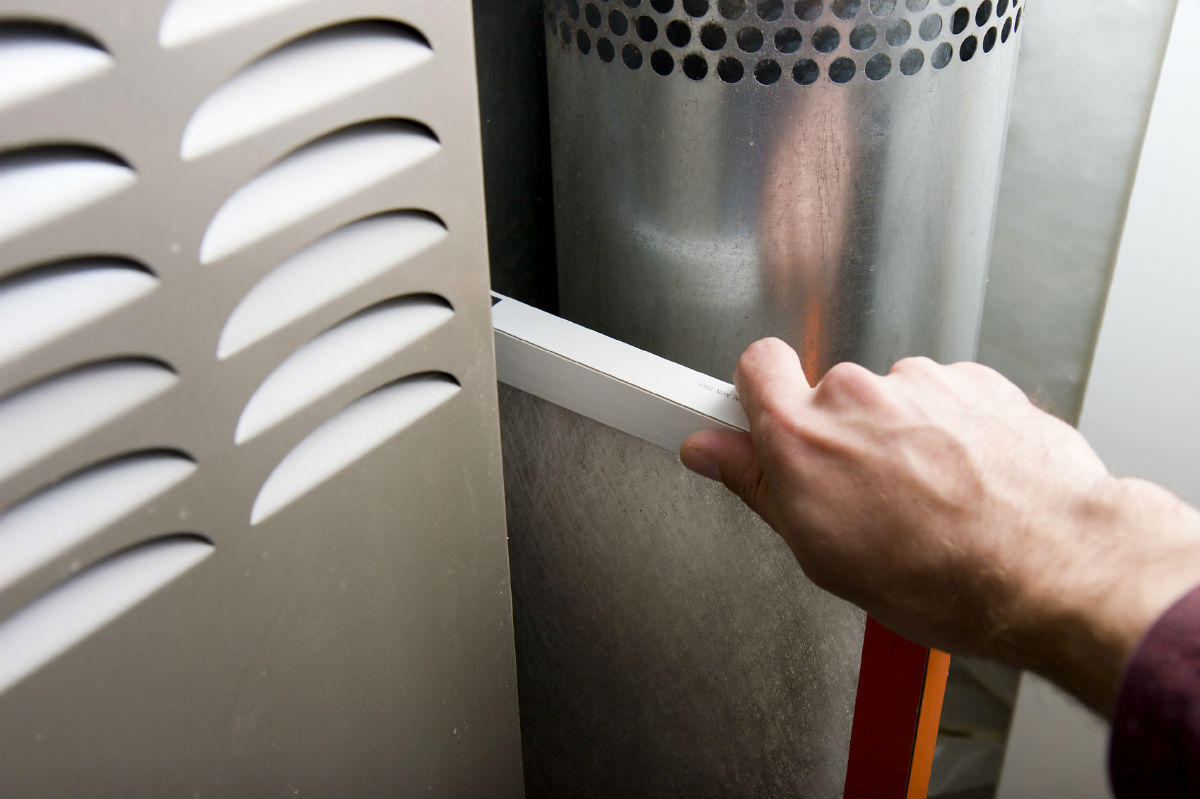January 22, 2015

5 Things to Consider When Choosing a Furnace
Is it time to replace the furnace? Make the right decision and invest wisely. Call Scott-Lee Heating to discuss all your heating and cooling needs!
Your furnace has a lifespan of between 15 and 20 years. When your furnace approaches the end of its life, it can become inefficient and costly to run. A furnace is a significant investment, but it is often a better choice in the long run. Before replacing your current system, consider the following tips to find a furnace suitable for your home.
1. Choosing the Type of System
Forced-air furnaces are the most recognizable type of heating system in American households. A packaged HVAC system will often include a gas furnace. The outdoor unit houses the evaporator, condenser, and blower in one enclosure.
In packaged systems, a series of tubes called “air ducts” distribute warm air into different rooms in the house. Even though most components are in the outdoor housing, it is controlled mainly from the indoor unit. Packages systems are suitable for homes without the necessary indoor space for a large cabinet.
The other type is a split system, which has an indoor and an outdoor unit. A thin tube connects the outdoor unit to the indoor air handler. They are generally more expensive to purchase and install. However, the energy efficiency of a split system makes it a worthwhile investment. One of the applications of mini-split systems is zoning, with multiple air handlers managing temperatures in different rooms.
A mini-split system is a good choice for extending heating into spaces where ductwork would not be feasible. You can use a mini-split system for the basement, garage, or guest rooms. The reliable team at Scott-Lee Heating Company can assist you in choosing a furnace suitable for the requirements of your St. Louis home.
2. Importance of Proper Sizing
The capacity of your furnace is crucial for the efficiency and longevity of your system. If the furnace output does not match the heating load of the building, it can compromise your comfort in winter.
An oversized system will have to keep switching on and off, which causes brutal wear and tear on its parts, shortening its lifespan and causing costly repairs. However, an undersized system will keep running constantly to meet the building’s heating load, which can cause the same issues.
To find the correct capacity for your furnace, an installation professional will determine the heating load in BTUs. The square footage of your home and your region’s climate zone can give you an idea of the ideal furnace capacity. For example, homes in Missouri, which is in climate zone 3, will need approximately 35 to 40 BTUs per square foot.
Nonetheless, it is essential to evaluate other variables unique to your home. A professional process will consider the size of the windows, the area of the walls, and the sun’s exposure, among other factors. If you plan to replace your current system, consider consulting Scott-Lee Heating Company for a home evaluation in St. Louis.
3. Consider Zoning Your Home
If you are planning to replace your furnace, consider zoning areas of your home for comfort and energy savings. Most homes have one system that heats up the entire house. The system will heat unoccupied rooms resulting in uneven temperatures throughout the building.
Traditionally, zoning was implemented by installing dampers into the air ducts. The dampers would open and close depending on the temperatures in each room. It is an inexpensive way of creating different heating zones.
However, the traditional approach of using dampers has its shortcomings. You will require a furnace with a variable-speed motor. Otherwise, you’ll need a by-pass duct to address pressure differences if you have a single-stage system.
Mini-split systems are more expensive than using dampers, but they are more reliable for zoning. Using multiple air handlers, they can manage indoor temperatures more precisely. You can use them on multi-story buildings to address temperature differences between the upper and lower floors.
Should you zone your home? It is not always necessary to use zoning systems. First, you need to ensure that the building envelope is not leaking warm air. You can address some temperature imbalances by sealing cracks and holes around the house.
For the best results, arrange for an energy audit of your home. A professional will guide you on the best zoning approach for your current system. A quality zoning system lasts longer and offers higher levels of comfort in the cold season.
4. Advanced Features for Energy Efficiency and Comfort
One of the benefits of replacing your aging furnace is the convenience and comfort features of newer models. A variable-speed motor is not only ideal for zoning but also adjusts to your home’s heating needs. A furnace with a variable-speed motor will run only when necessary. Therefore, it consumes less energy than conventional systems and is not as prone to component malfunctions.
The most recent models are usually condensing furnaces. They have a second heat exchanger close to the exhaust to absorb excess heat. Since they can utilize all the wasted heat from the system, condensing furnaces can attain AFUE ratings of over 90%.
Additionally, modern furnaces have features that make them more convenient and safer to operate. Manufacturers have replaced the old pilot lights with electric ignition. Instead of a flame burning throughout, a filament ignites the gas.
Newer models have a sealed combustion system that draws air from outside the house through a PVC pipe. In contrast, older gas furnaces would pull air from your home to ignite. By sealing the combustion, the system is more energy-efficient. It enhances safety by eliminating the risk of toxins escaping into your home.
5. Quality of Installation and Warranties
Your furnace is a significant investment for your home. Manufacturers have varying terms for the cost of replacing parts. Most brands will cover some of the critical system components, such as the compressor. You can, however, purchase an extension from the furnace manufacturer.
But most brands will acknowledge the warranty only if the installation process was carried out by a professional. A certified technician can ensure that your heating system runs efficiently throughout the cold season. Substandard installations can diminish your comfort, and problems may crop up shortly after installation.
Similarly, manufactures may require you to sign a maintenance agreement with a heating service company. You should schedule a furnace tune-up at least once a year, depending on your heating needs.
Annual maintenance will reduce the incidences of heating faults. In case of a malfunction of furnace components, your warranty will cover the expenses. Therefore, a tune-up is an investment that reduces running costs for your furnace in the long run.
Professional installation companies will also have additional incentives and guarantees. They have a vast knowledge of the local regulations and can guide you on getting rebates and incentives. To learn more on geothermal heating system rebates in St. Louis, talk to NATE-certified technicians from Scott-Lee Heating Company.
Always work with professionals who are licensed, bonded, and insured. Consider signing up for annual maintenance after installation to take advantage of your warranty coverage.
If you have any questions, you can talk to Scott-Lee Heating Company experienced staff in St. Louis. We are a Lennox Premier Dealer with four decades of experience in the business. Our team can install and repair different models of furnaces, air conditioners, and humidification systems. We have a skilled team that can assist you with all services including installations in new constructions and renovations. You can rely on our friendly staff for professional advice throughout the process. Call us today for affordable and comprehensive solutions in St. Louis.
